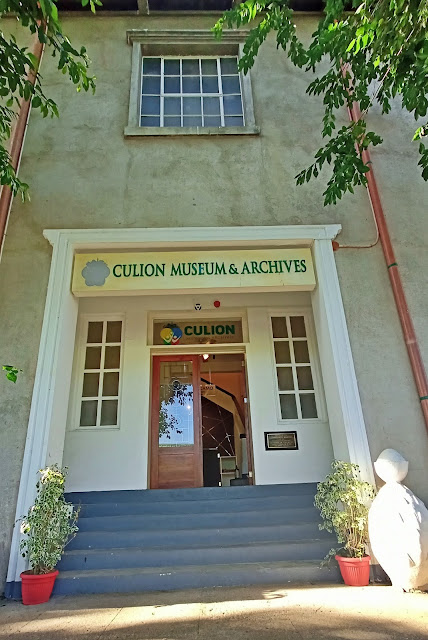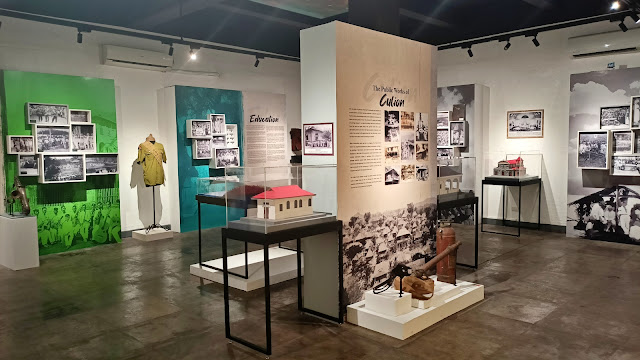Far from being a typical Philippine island destination, Culion hides a ubiquitous layers of fascination courtesy of its storied history that is both harrowing and triumphant. Many decades removed from its upsetting past when boat loads of patients stricken with leprosy was sent to the island to live a life of treatment and isolation, Culion’s journey from being the island of no return to a charming quant isle is enough to entice any inquisitive traveler.
 |
| La Immaculada Church of Culion |
Despite having answered my curiosities almost a decade ago on my first visit to the island, coming back as part of a media familiarization trip organized by the Tourism Promotions Board of the Philippines to Culion gave me a chance to peek deeper into its curious past. Images of the once leprosy colony flooded my mind’s imagination once again. Putting it in context, multiply the quarantine period we experienced during the height of the Covid-19 pandemic to a hundred times, and that’s how one can come close to picturing the isolation that hundreds of leprosy patients had to endure back then.
Culion Museum and Archives
What better way to know the island’s history than a visit to Culion Museum and Archives. Culion island was selected by the Americans in 1901 as a "segregation island" where patients afflicted with leprosy are to be brought, isolated and treated. In 1907, the first group of patients — numbering 379 — docked on the island aboard two Coast Guard cutters "Polillo" and "Mindanao".
On September 12, 1907, Act 1711 of the Philippine Commission was passed paving the way for the island of Culion to be used for the compulsory segregation of leprosy patients by confining them in a compound encompassing 85 houses for their treatment.
What soon followed consisted of both the grim reality of patients living in isolation and the heroic efforts of medical professionals on a quest to find a cure for leprosy — their names forever immortalized in the walls of the museum; Dr. H. Windsor Wade, his wife Dorothy Paul Wade and Dr. Jose N. Rodriguez are just some of them.
Culion Museum and Archives also collates all information regarding the haunting episode of the island as a leprosy colony. Personal records of patients including autopsy slides are still stored including items widely used at the time such as old monographs, cameras, telephones, typewriters to old postcards and paper bills.
The museum has undergone a renovation and is now housed inside a concrete two-story building as compared to a small enclosed room when I first visited in 2012. At first thought, upon hearing the Culion’s description as a “former leper colony”, one can immediately sense an air of dread.
Yet, thanks to the historical texts, artifacts, medical records, old photographs and other curated items inside the Culion Museum and Archives, visitors can easily learn about the sacrifices that was made on then “Island of no Return” — from treating the "walking dead" of that time to totally freeing the island of the feared disease.
Fort of Culion & the La Immaculada Church
Situated a few steps from the museum is the 18th-centure La Immaculada Church. Originally built in 1740 from coral stones, one could easily picture the church as the only space of comfort and spirituality of the leprosy patients back then. Today, it stands solidly on top of a hill overlooking the azure colored waters of Busuanga Bay.
Right next to it is the Fort of Culion. Constructed in 1740 by the Recollect Augustinians using coral stones cut as squares covering four bastions, the Fort served as a key defense wall against Muslim fighters who revolted against the Spanish colonization of the Philippines.
 |
| View from Culion Fort |
Old Leper Colony Walking Tour
After our museum, church and Fort visit, we continued our Culion heritage and history tour on a walk along the Old Leper Colony town.
We started at the Colony Hall and Theater, where ironically, a statue of Governor General Leonard Wood was erected.
 |
| The controversial Gov. Gen. Wood |
Credited for his efforts in gathering money from the United States to fund for leprosy research, Wood was also involved in the infamous "More Crate Massacre" in 1906 — a “battle” according to US Military but was questioned by author Mark Twain, “In what way was it a battle?”
 |
| Tres Bolas |
Consumed with mixed feelings regarding Wood's tenure in the Philippines, I joined our group towards the other historical remnants of the Old Culion; the Grand Stairway, Rizal Plaza, Obras Publicas and the interesting structures the Tres Bolas. Appearing like taller igloo houses, the Tres Bolas was used as a public toilet and bath in the 1920s.
 |
| Rizal Plaza |
The small island town of Culion projects a sleepy vibe that most travelers can easily overlook and mistake as "nothing's special there". Upon further examination though, Culion hides a very fascinating history that will teach us the effects of discrimination and isolation, and the importance of empathy and resiliency.





























